第124章 SOCIETY AND FESTIVALS(17)
Brilliant pantomimes of the same kind were given at Bologna, at the marriage of Annibale Bentivoglio with Lucrezia of Este.Instead of the orchestra, choral songs were sung, while the fairest of Diana's nymphs flew over to the Juno Pronuba, and while Venus walked with a lion--which in this case was a disguised man--among a troop of savages.The decorations were a faithful representation of a forest.At Venice, in 1491, the princesses of the house of Este were met and welcomed by the Bucentaur, and entertained by boat-races and a splendid pantomime, called 'Meleager,' in the court of the ducal palace.At Milan Leonardo da Vinci directed the festivals of the Duke and of some leading citizens.One of his machines, which must have rivalled that of Brunellesco, represented the heavenly bodies with all their movements on a colossal scale.Whenever a planet approached Isabella, the bride of the young Duke, the divinity whose name it bore stepped forth from the globe, and sang some verses written by the court-poet Bellincioni (1490).At another festival (1493) the model of the equestrian statue of Francesco Sforza appeared with other objects under a triumphal arch on the square before the castle.We read in Vasari of the ingenious automata which Leonardo invented to welcome the French kings as masters of Milan.Even in the smaller cities great efforts were sometimes made on these occasions.When Duke Borso came in 1453 to Reggio, to receive the homage of the city, he was met at the gate by a great machine, on which St.Prospero, the patron saint of the town, appeared to float, shaded by a baldachin held by angels, while below him was a revolving disc with eight singing cherubs, two of whom received from the saint the scepter and keys of the city, which they then delivered to the Duke, while saints and angels held forth in his praise.A chariot drawn by concealed horses now advanced, bearing an empty throne, behind which stood a figure of Justice attended by a genius.At the corners of the chariot sat four grey-headed lawgivers, encircled by angels with banners; by its side rode standard-bearers in complete armor.It need hardly be added that the goddess and the genius did not suffer the Duke to pass by without an address.A second car, drawn by a unicorn, bore a Caritas with a burning torch; between the two came the classical spectacle of a car in the form of a ship, moved by men concealed within it.The whole procession now advanced before the Duke.In front of the church of St.Pietro, a halt was again made.The saint, attended by two angels, descended in an aureole from the facade, placed a wreath of laurel on the head of the Duke, and then floated back to his former position.The clergy provided another allegory of a purely religious kind.Idolatry and Faith stood on two lofty pillars, and after Faith, represented by a beautiful girl, had uttered her welcome, the other column fell to pieces with the lay figure upon it.Further on, Borso was met by a Caesar with seven beautiful women, who were presented to him as the Virtues which he was exhorted to pursue.At last the Cathedral was reached, but after the service the Duke again took his seat on a lofty golden throne, and a second time received the homage of some of the masks already mentioned.To conclude all, three angels flew down from an adjacent building, and, amid songs of joy, delivered to him palm branches, as symbols of peace.
Let us now give a glance at those festivals the chief feature of which was the procession itself.
There is no doubt that from an early period of the Middle Ages the religious processions gave rise to the use of masks.Little angels accompanied the sacrament or the sacred pictures and relics on their way through the streets; or characters in the Passion--such as Christ with the cross, the thieves and the soldiers, or the faithful women--were represented for public edification.But the great feasts of the Church were from an early time accompanied by a civic procession, and the _naivete _of the Middle Ages found nothing unfitting in the many secular elements which it contained.We may mention especially the naval car _(carrus navalis), _which had been inherited from pagan times, and which, as an instance already quoted shows, was admissible at festivals of very various kinds, and is associated with one of them in particular-- the Carnival.Such ships, decorated with all possible splendor, delighted the eyes of spectators long after the original meaning of them was forgotten.When Isabella of England met her bridegroom, the Emperor Frederick II, at Cologne, she was met by a number of such chariots, drawn by invisible horses, and filled with a crowd of priests who welcomed her with music and singing.